Africa
Asia
Europe
Oceania
North America
South America
AFRICA

Agroecology. The Bold Future of Farming in Africa
A publication launched by the African Alliance for Food Sovereignty, showcasing the huge potential of Agroecology to feed Africa, fix broken food systems and repair damaged landscapes, providing abundant healthy and nutritious food sustainably while increasing incomes and improving climate resilience. The publication also illustrates 15 case studies.
Will the Green Revolution really ‘nutritionalise’ Africa?
Opinion by Million Belay.
We are told that high input agriculture will boost food production in Africa. A persistent worry for Million Belay is the loss of knowledge related to our nutritious, traditional crops if they succeed.

A systems approach against poverty
Opinion by Million Belay.
Why is poverty deepening in Africa even when millions of dollars continue to be poured in to alleviate it?, asks Million Belay. He answers by highlighting how we need to promote agroecology, treat agriculture as a system, and move away from green revolution approaches.

Biointensive Agriculture Training Program in Kenya
Manor House Agricultural Center provides training in low input farming as an alternative to conventional methods, which are heavily reliant on external inputs. Farmers practicing biointensive farming techniques experience significant yield increases and improved soil fertility and grow more nutritious crops. Since 1984, over 100,000 farmers have received this training, and an estimated 200,000 households now use methods of biointensive agriculture.

Agroforestry to Improve Farm Productivity in Mali
A research project on improved fallows examined how short-term rotations of selected perennial tree and shrub species impact cereal yields and soil quality in subsistence maize cropping systems. The effects of improved fallows on maize yields were significant when combining a tree species (Gliricidia) and a nitrogen-fixing legume (Stylosanthes). Read more

Agroforesterie pour la sécurité alimentaire au Malawi
Le Malawi est confronté à une myriade de problèmes environnementaux, sociaux et sanitaires, y compris l’insécurité alimentaire, la dégradation des terres et la déforestation. Un programme d’agroforesterie promeut la plantation d’arbres pour augmenter les rendements des cultures dans les sols épuisés, lutter contre la déforestation et autonomiser les femmes.
Bees bring a new buzz to family farming in Zimbabwe
One way that family farmers improve their resilience to both climatic and economic shocks is to diversify what is produced. More and different crops and livestock, particularly local varieties and breeds are being promoted. Two other options stand out too – bees and trees. These have the added advantages of complementing the production of agricultural crops and enhancing the agroecosystem. In Zimbabwe, the Ruzivo Trust has been promoting beekeeping, and the results are showing the sweet taste of success. Bees can help farmers break out of poverty.

Moving from vulnerability to resilience in Africa
In August 2012, the Seidu family had to cope with the bad harvest. Like many farming families in northern Ghana, they had to adopt the ‘one-zero-one’ strategy for the children and the ‘zero-zero-one’ strategy for themselves. ‘One’ represents a meal, ‘zero’ is no meal. So during the lean season, their four children had breakfast in the morning, nothing at midday, and a meal in the evening.

Home nurseries: Viable businesses with environmental awareness
Butana is a dry plateau in northern Sudan, east of the river Nile. Covering 65,000 square kilometres, less than 10% can be described as ‘woodland’ in the vaguest sense of the word, and even these trees are disappearing rapidly. The Butana Integrated Rural Development Project began in 2008 with the aim of supporting the livelihoods of poor family farmers by strengthening their resilience in the face of recurrent droughts. And improving tree cover was a key means of achieving this.
From slash and burn to ‘slash and mulch’
In semi-arid cropping regions of West Africa, fallow periods are getting shorter. As land becomes more scarce, farmers are not able to give their soils enough time to rest. This is leading to depletion of soil organic matter, severely threatening soil fertility and damaging soil structure. In the worst cases, crops hardly yield anything anymore. But this is not an option for family farmers. In Burkina Faso, some have found ways to restore their soils that have been dubbed ‘slash and mulch’. The improvement and spread of these techniques also proves the importance of partnerships between farmers and researchers in developing locally suited practices.
ASIA
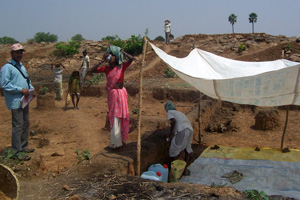
The world’s largest safety net for family farmers?
India’s Mahatma Gandhi National Rural Employment Guarantee Act (MGNREGA) is the largest public-works based employment programme in the world. Unanimously enacted by the Indian parliament in 2005, implementation began in February 2006. With an annual budget of six billion US dollars, it now supports some fifty million rural people – larger than the population of Senegal, Mali and Niger combined. This article focuses on the successes, issues and potential of the Act to improve the well being of workers and family farmers.

Sustainable Way of Living – Homeschooling the Youth
Mainstream education has caused difficulties for the youth of northern Thailand in reaching their dreams. In most cases, they are forced to take exorbitant student loans which brings their families in poorer conditions.
This video proposes an alternative to mainstream education by home schooling the youth and teaching them the sustainable way of living. They are taught to live in a sufficiency economy model, consuming what they only need and driving themselves away from greed.

A ‘green revolution’ that may save Filipino coconut farmers
In agroforestry, farmers plant more than one type of crop and in different heights – a concept called multi-storey cropping. Like in the Marjes’ farm, you’ll find coconut trees or tall fruit trees watching over everything.
In lower levels are shorter fruit trees, coffee or cacao trees, and herbal plants. On the ground are pineapples, tuber and root crops like cassava, potato, and peanut.
Youth and agriculture: It’s up to us
With a population of more than 28 million, Nepal is one of the poorest countries in Asia. But it is enormously rich in terms of biodiversity and natural resources, and agriculture plays a very important role in the country’s economy. It is also very rich in another way: young people make up 40 percent of the population. The problem is that young people don’t seem to be interested in agriculture.
The Mother of Our Breath
Women have been the nurturers of the family and providers of food on land, while men have been providers from the sea. Children are expected to help their parents and other elders in their different tasks. This is the story of the Paulauan traditional family farming system in the western most regions of the Caroline Islands in the Republic of Palau.

Nutrition from innovation and taste from waste
From a situation of widespread undernutrition, consuming fresh vegetables all year round has now become a reality for many Nepali households thanks to their expanding home gardens. But the stories they tell show that the benefits of home gardens are not limited to improving household nutrition. The gardens also help to empower women and conserve biodiversity, two much needed conditions for better family and community nutrition on a broader scale.
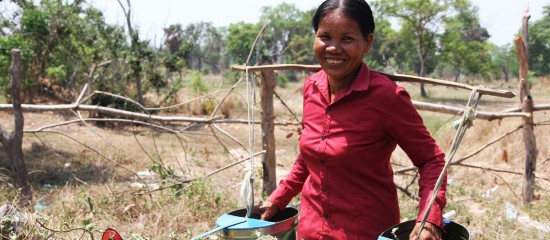
Climate Resilience Sustainable Agriculture Experiences
This document summarises case studies from ten countries through ActionAid’s approach to climate resilient sustainable agriculture, which incorporates agroecology in a human rights framework. Based on these experiences ActionAid recommends to increase investment in agroecology, as part of a comprehensive human rights based approach: Read more

Participatory Guarantee System and Analog Forestry
Besides providing for many of our needs, forests play a pivotal role in providing ecosystem services, ranging from biodiversity conservation to climate regulation. Read more

Aprendiendo de los agricultores
La primera vez que leí sobre el SICA fue una tarde del 2002. En los siguientes años, en mi función de extensionista de la Oficina Distrital de Desarrollo Agrícola (DADO) empecé a promover el SICA en el distrito de Morang, Nepal.
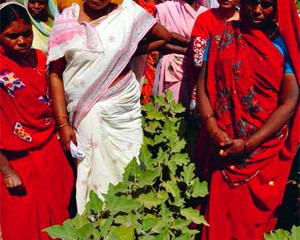
SRI in Bihar: From one to 350,000
Farmers in Bihar were initially sceptical when they heard about the System of Rice Intensification, five years ago. Only one farmer decided to try it. From then, first by word of mouth and now with government support,
EUROPE

Youth and agriculture: German youth struggle for land
‘Land grabbing’ has grabbed people’s attention in recent years, but this phenomenon is not restricted to developing countries. In the heart of Europe, young German farmers like Paula Giola are also struggling to retain and regain access to farmland.

La Durette, a pilot agroecological farm
La Durette is a pilot farm in agroecology located in Avignon, France. Its aim is to set up innovative mediterranean agricultural systems, mixing crops under agroforestry in various designs – mainly fruits and vegetables, and integrating animals into the systems.

Old traditions, new practices
The August 2012 issue of De Boerderij, a popular magazine for Dutch farmers, showed how “innovative farmers are increasingly successful in finding their consumers”. Read more

Seeking convergence on agroecology- a conference impression
Whoever thought that agroecology is only gaining momentum as an agricultural practice, science and movement in Latin America, is wrong. A two day conference in June 2013 clearly depicted the richness of agroecology in Europe- as well as the challenges and opportunities. Read more
Ecological Agriculture, Climate Resilience and a Roadmap to Get There
Environment and Development Series No. 14.
This paper looks at how ecological agriculture, by building healthy soils, cultivating biological diversity and improving water harvesting and management, can strengthen farmers’ capacity to adapt to climate change. Accordingly, the authors call for a reorientation of policy, funding and research priorities from the dominant industrial agriculture model to ecological agriculture.

Designing and Disseminating Ecological Production Systems for Perennials: Organic Olive Production in Crete
Olive production is a major crop in the Mediterranean region. Organic olive production offers agroecological and socioeconomic advantages. A prototyping design methodology was used to design, introduce, test and disseminate ecological olive production systems
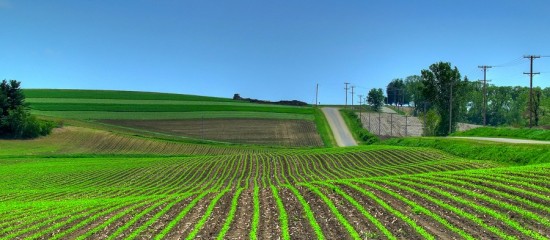
Biological Control of Lygus rugulipennis in Italy
Use a technique with a low level of environmental impact for the management of Lygus rugulipennis, a very harmful pest for many crops, especially lettuce, in Italy.

Interaction between Agricultural and Natural Systems in the Mediterranean Landscape of Apulia, Italy
This study has developed a comprehensive framework that incorporates landscape ecological principles and GIS analysis in the planning and design of more sustainable agricultural systems in the Mediterranean landscape of Apulia (Southern Italy)

Nematodes in the “Tierra Estella” zone of Navarra, Spain
The object of this study is to see the presence of nematodes in the soils of the areas of Ayegui, Muniain de la Solana, Sesma, Sartaguda and Andosilla.
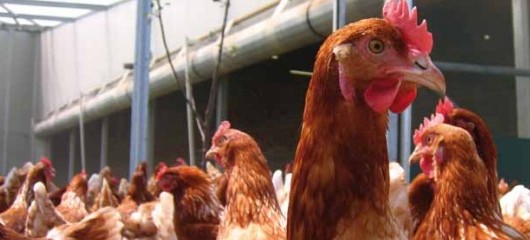
Beyond battery cages: a humane, sustainable model of egg production in The Netherlands
Anticipating the disappearance of battery cages, alternative, more humane and sustainable methods of egg production have been and are being devel -oped. One up-and-coming example is the Roundel, a concept in The Netherlands that became operational in 2010 and is success-fully expanding. This case study shows its social, environmental and economic benefits – and the unique partnership between business, scientists and civil society that lay the foundation to its success.
OCEANIA
NORTH AMERICA
SOUTH AMERICA


